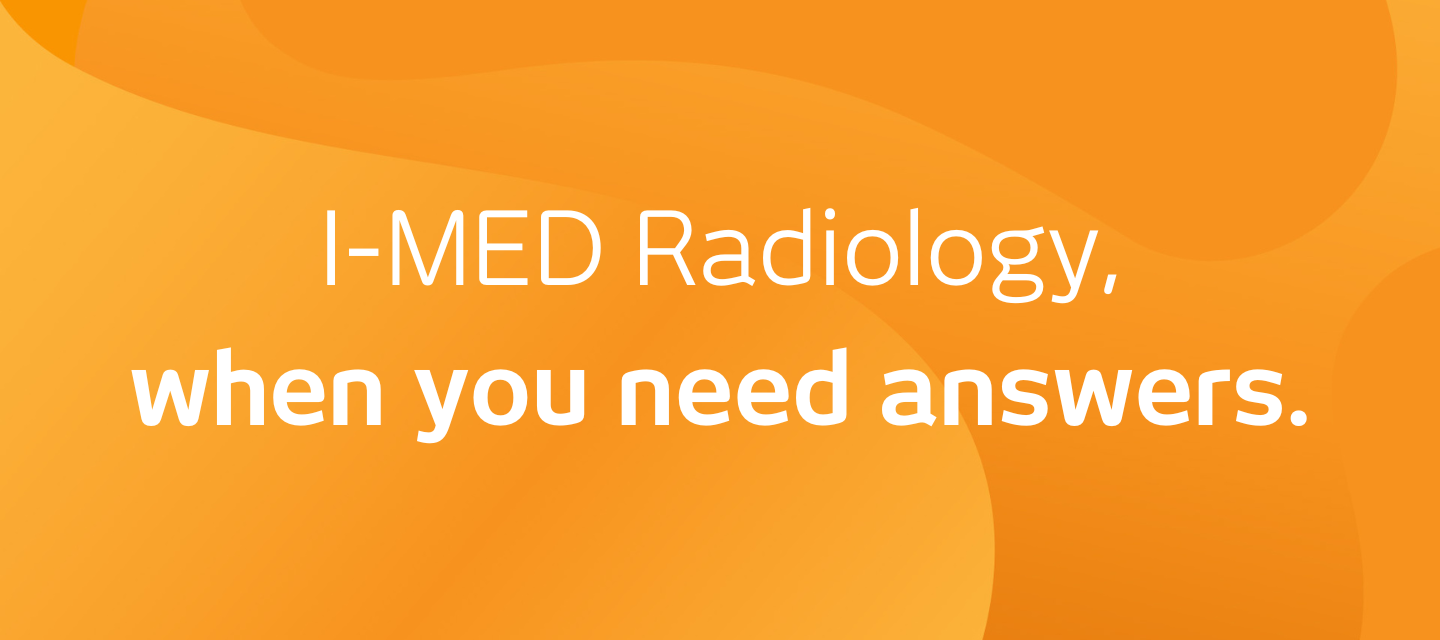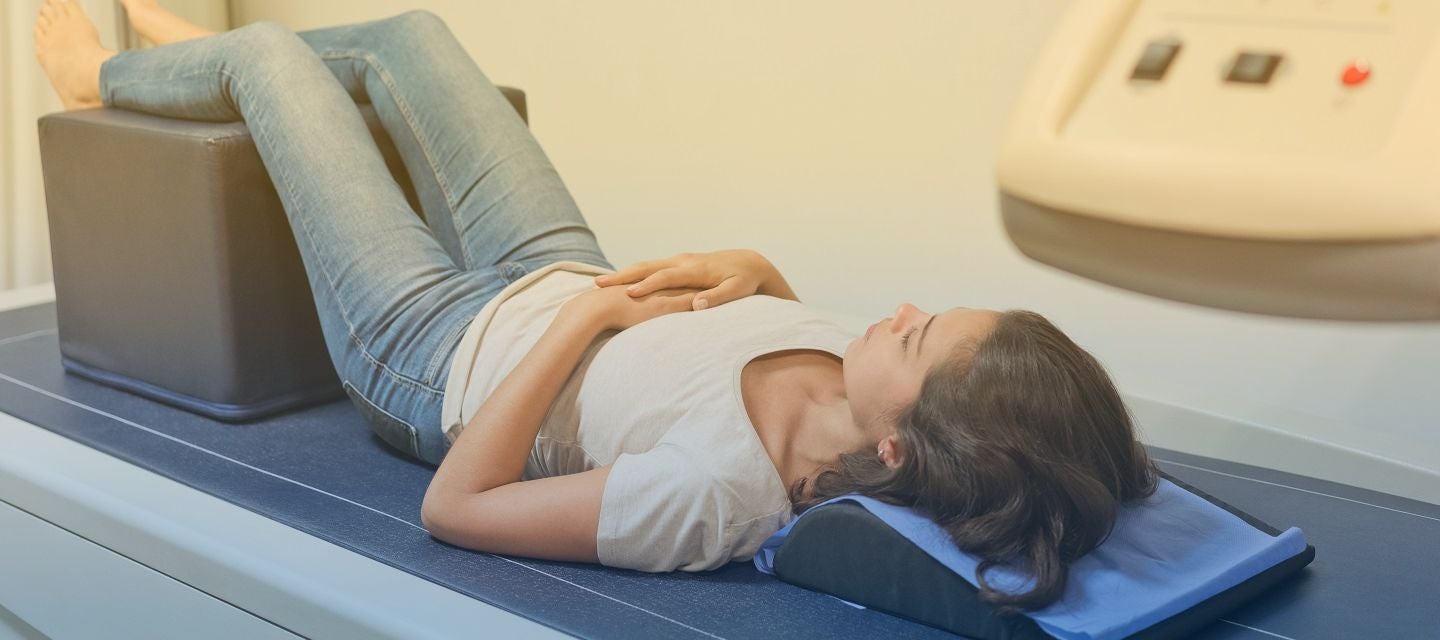

Bone densitometry (DEXA)
Bone densitometry (DEXA)

What is bone mineral densitometry?
A dual-energy x-ray absorptiometry scan (DEXA), or bone density scan, is a special type of x-ray that measures bone mineral density (BMD). It provides information about bone strength or fragility and the risk of fractures or broken bones. A higher density generally indicates a lower risk of fracture.
The spine and one or both hips are routinely scanned; some machines also routinely evaluate the forearm. The forearm might also be scanned if either the hip or spine is unavailable (usually due to surgery). As any condition affecting bone density tends to affect the whole skeleton, a snapshot of a few sites is sufficient to establish the overall bone density. BMD has been shown to be the best way of predicting the risk of fracture.
How much will my procedure cost?
Fees for radiology procedures vary and depend on a number of factors, including the type of procedure, what has been requested on your referral and the Medicare rebates available. We will advise you of any fees associated with your examination at the time of making your appointment or when you arrive at the clinic. Alternatively you can contact us and one of our team will be happy to answer any queries regarding fees. For more information about fees and rebates please visit our account FAQs.
Why would my doctor refer me to have a BMD Scan? keyboard_arrow_down
You might be referred for this test if you have:
- a medical condition that could weaken your bones
- had recent fracture after a minor injury or fall, that would not have broken this bone in other people
- an x-ray image or picture taken for another reason which has shown that the vertebrae in your spine are weakened and losing height.
The most common cause for this is osteoporosis, which is a common condition that increases with age. It is a major cause of weak bones, causing fractures resulting from minor injury, which is preventable with treatment. Osteoporosis, in the absence of fracture, has no symptoms. A number of medical conditions and medications can increase bone loss, making it important to diagnose osteoporosis early, to prevent fractures from occurring. The DEXA scan measures the bone mineral content and provides information to your doctor as to whether you have lost a small amount of bone (osteopenia) or a more significant amount (osteoporosis), compared with a young normal population, and people of the same age and sex as you. This informs your doctor about your risk of having a fracture, and assists in monitoring bone loss and in planning any preventative therapy or medical treatment.
How do I prepare for a BMD scan? keyboard_arrow_down
No preparation is required for this procedure. You do not need to fast, and you can take all your medications as usual. It is helpful, but not essential, to wear loose fitting clothing without metal buttons, buckles, fasteners or zippers, as metal objects interfere with the scan. A gown or sheet is provided if clothing needs to be removed.
A DEXA scan does involve a very small dose of radiation, which makes this test unsuitable for women who are, or might be, pregnant.
If you have had spinal surgery, particularly with metallic implants, or hip surgery (hip replacements, screws or pins) you will need to inform the radiographer carrying out the scan, who might decide to avoid that area.
Any radiological investigation using contrast media (Barium enemas, IVP’s and CT scans) or nuclear medicine test might interfere with the accuracy of the DEXA scan if carried out within the last week. This can usually be discussed at the time you book your DEXA scan appointment.
What happens during a BMD scan? keyboard_arrow_down
On arrival for your DEXA scan, your height and weight will be measured. This allows the computer to generate information about your bone density.
The most important aspect of a DEXA scan is to position the hips and spine in the same way each time you are scanned, so that results are accurate and comparable at each visit. To achieve this, when scanning the spine, a cushioned box will be placed under your knees. The cushioned box allows the small of your back or lower spine to lie flat on the table. To scan the hip, this box is removed and a frame made up of a flat sheet of Perspex with a triangle at one end will be placed between your feet.
The frame allows the leg being scanned to be positioned accurately. The foot is strapped to the triangle by Velcro, and the knee can also be held in place by a Velcro strap to keep the leg still. Generally, neither of these positioning manoeuvres are uncomfortable or painful.
How long does a BMD scan take? keyboard_arrow_down
A BMD scan varies between individual scanning machines, and can take from 10 minutes to 30 minutes.
What are the benefits of a BMD scan? keyboard_arrow_down
A DEXA scan is currently the best test for measuring the amount of bone (density) in the spine, hip or wrist. The result is a comparison of your bone density with both the young normal population (of the same sex), and to an age- and sex-matched population. The BMD provides information about fracture risk and bone loss. It can be used to monitor response to treatment, with the usual frequency of scanning being two years. More accurate assessment of BMD is obtained when the measurements are repeated at the same location and on the same machine.
Who does the BMD scan? keyboard_arrow_down
A radiographer (medical imaging technologist) skilled in DEXA scans will carry out the scan, and ensure you are positioned correctly and you are comfortable. In most instances the radiographer will remain in the room with you for the duration of the scan. The images taken by the radiographer will be reviewed by a radiologist (specialist doctor), and a written report provided to your referring doctor.
Are there any after effects of a BMD scan? keyboard_arrow_down
There are no after effects of a BMD scan.
How do I get my results? keyboard_arrow_down
A Diagnostic Radiography Radiologist will review your images, along with your medical history and any previous imaging. Your referring doctor will receive a report within 48 hours of the examination. If your results are urgent, or you have a same day appointment with your doctor we will arrange for your results to be available immediately following the scan. Please arrange a follow up appointment with your referring doctor to discuss the results.

This information has been reviewed and approved by Dr Ronald Shnier (I-MED Chief Medical Officer).
Related articles


This information has been reviewed and approved by Dr Ronald Shnier (I-MED Chief Medical Officer).
How much will my procedure cost?
Fees for radiology procedures vary and depend on a number of factors, including the type of procedure, what has been requested on your referral and the Medicare rebates available. We will advise you of any fees associated with your examination at the time of making your appointment or when you arrive at the clinic. Alternatively you can contact us and one of our team will be happy to answer any queries regarding fees. For more information about fees and rebates please visit our account FAQs.
Related articles

